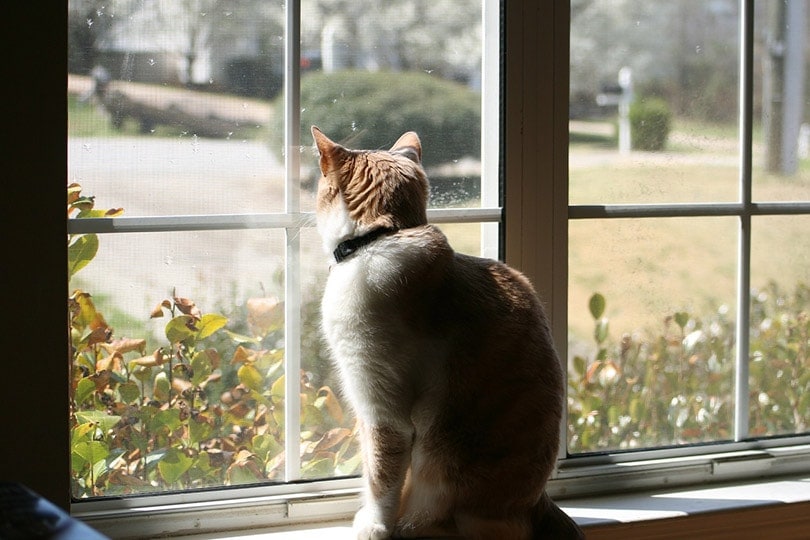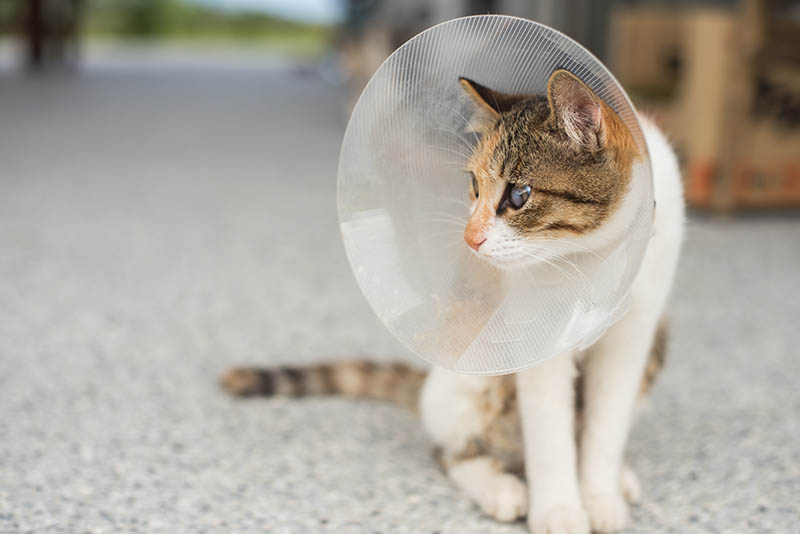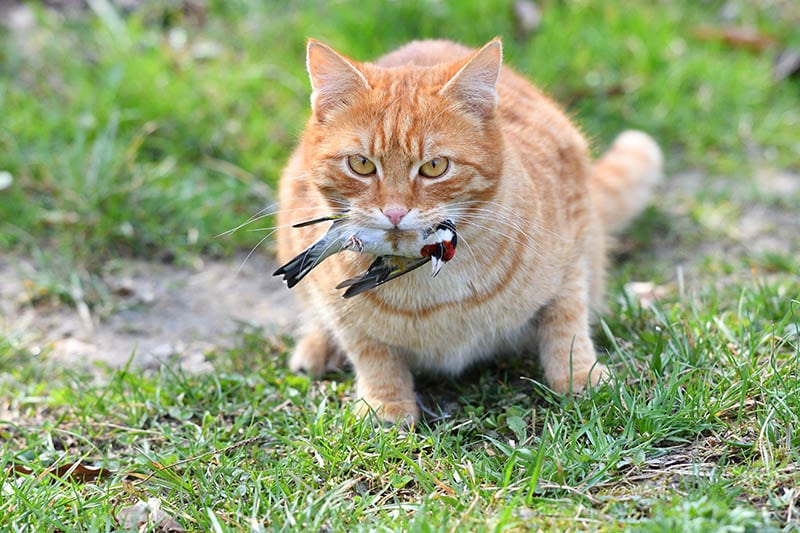Cornish Rex vs. Devon Rex: What’s The Difference? (With Pictures)
By Ed Malaker
Updated on
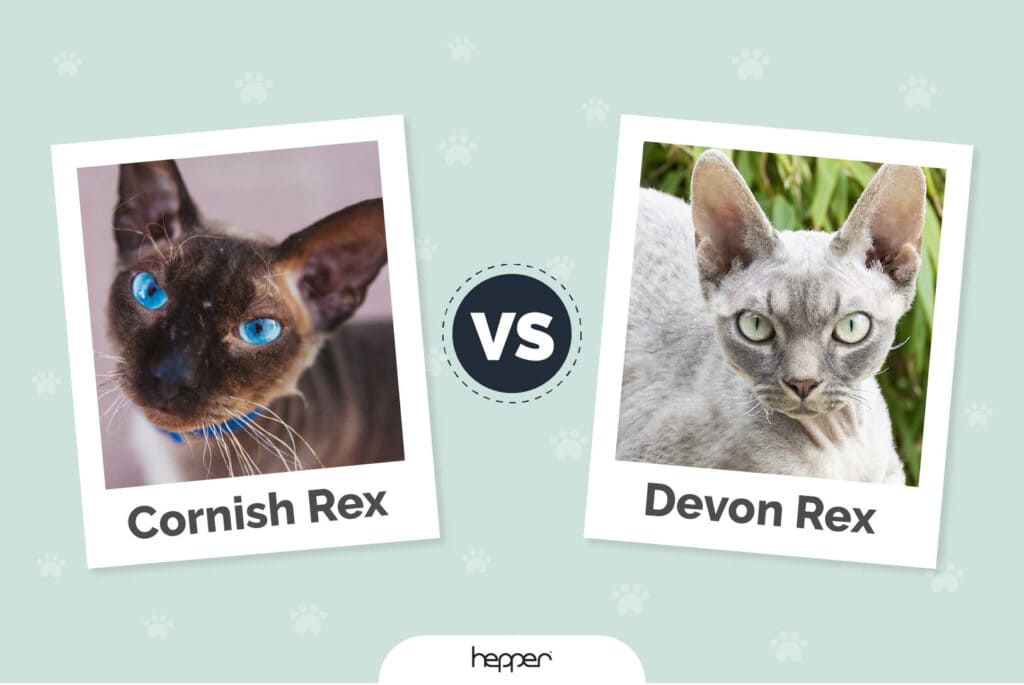
The Cornish Rex and Devon Rex are popular breeds with short wavy coats and muscular bodies. However, there are several differences between the two cats, so if you are having a hard time choosing your favorite, keep reading as we compare these breeds to learn more about them. We discuss training, healthcare, personality, and more to help you make an informed decision.
Visual Differences
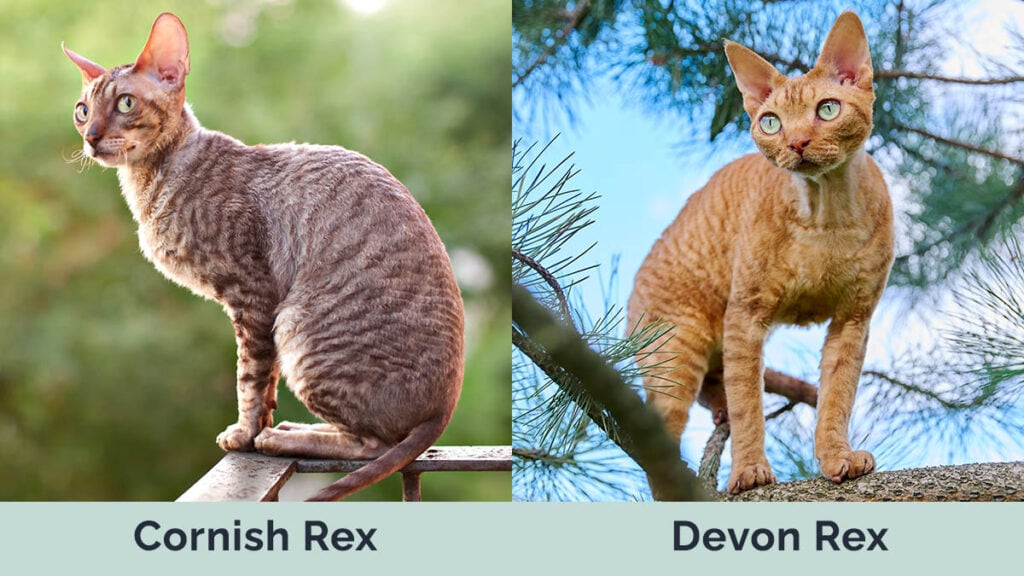
At a Glance
- Average height (adult): 8–12 inches
- Average weight (adult): 6–10 pounds
- Lifespan: 11–15 years
- Exercise: 1+ hours a day
- Grooming needs: Low
- Family-friendly: Yes
- Other pet-friendly: Yes
- Trainability: Easy to train, eager to please
- Average height (adult): 10–12 inches
- Average weight (adult): 6–9 pounds
- Lifespan: 9–15 years
- Exercise: 2+ hours a day
- Grooming needs: Moderate
- Family-friendly: Yes
- Other pet-friendly: Yes
- Trainability: Easy to train, eager to please
 Cornish Rex Overview
Cornish Rex Overview
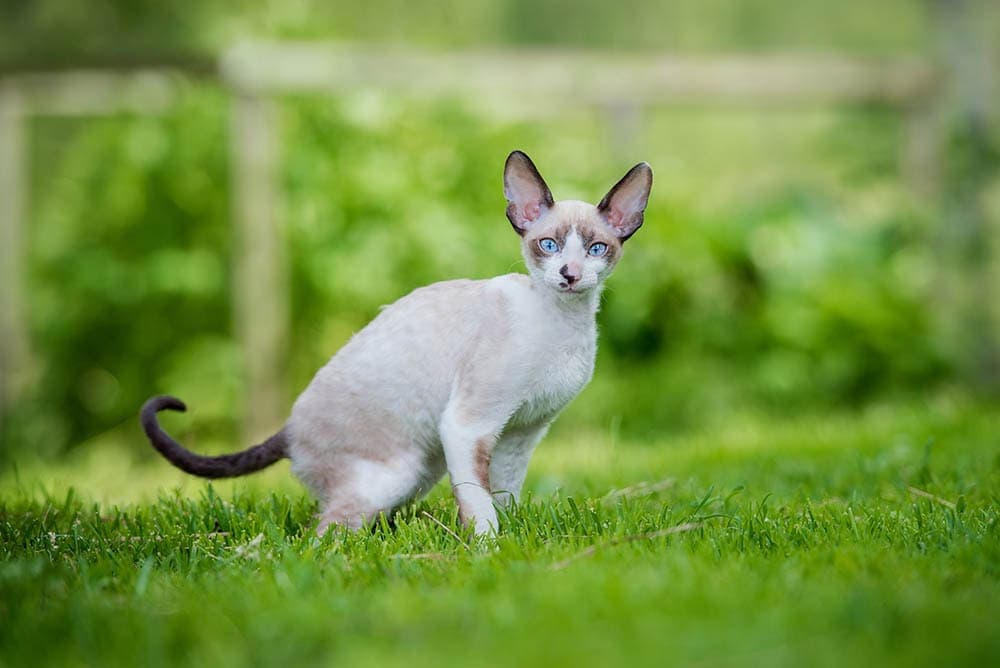
History
The Cornish Rex first appeared in the 1950s and got their name from the Cornwall region of England, where they were born. A British Shorthair mother and an unknown father had a kitten with a genetic mutation that caused them to have a soft curly coat. Breeders then mixed this new Cornish Rex with several other breeds, including the Siamese, Burmese, and British Shorthair, to create a healthier breed. The cat came to the United States in the late 1950s, and breeders mixed them with even more breeds, like the Havana Brown and American Shorthair, to finalize the breed as we know it today.
Appearance
The Cornish Rex has a long and slender body, large eyes and ears, and a soft, curly undercoat of fur. They don’t have an outer coat, giving them a unique appearance and feel when you pet them. They have plenty of energy and enjoy perching on high areas around the home. Their slender frame can make them look fragile, but they have muscular bodies that are quite tough. The coat comes in many colors, including black, blue, lilac, chocolate, and red, and in several patterns, including bicolor, tabby, and colorpoint.
Grooming
The Cornish Rex is extremely low maintenance and rarely requires any brushing or combing. However, the lack of guard hairs can enable oil to build up on the paws and under the chin, which might cause them to leave marks on the furniture. To remove these oils, bathe the cat using a pet-safe shampoo every few weeks.
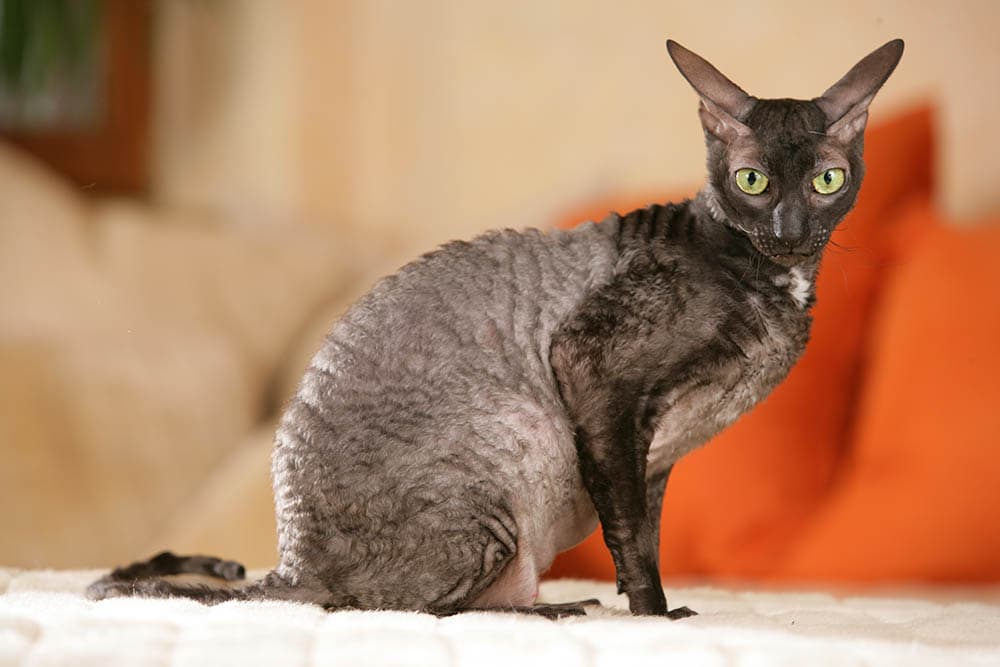
Special Needs
Since the Cornish Rex lacks guard hairs, they can struggle to keep warm, so you must keep them indoors in a carefully regulated climate. Heaters and blankets can help, but be sure to prevent them from getting too close to heaters and other hot items that might burn them. These cats can also suffer from sunburn and other problems due to excess ultraviolet light, so you must keep them out of the windows or close the shades.
Suitable for:
The Cornish Rex is a friendly and affectionate cat that gets along well with children and other pets. They enjoy being part of a family, like being carried, and will spend many afternoons on your lap. They’re always ready to play and have plenty of energy, making them a great choice for large families.
Devon Rex Overview
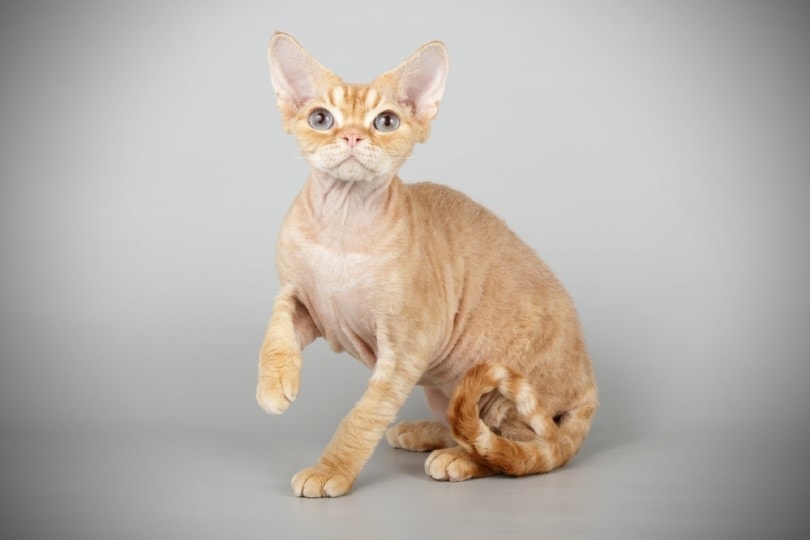
History
The Devon Rex first appeared in 1960, when a spontaneous mutation created a curly-coated kitten in Devonshire, England. When breeders tried to mix them with a Cornish Rex, they determined that the gene that produces the coat was different, so they kept them as separate breeds. These cats first arrived in the United States in 1968 and became more popular. Today, the Cat Fanciers Association and The International Cat Association accept them as a unique breed.
Appearance
The coat of the Devon Rex is fine, like the Cornish Rex, and can vary from thin, like suede or felt, to wavy. You can find the coat in every available feline color and pattern. They have a muscular body, big oval eyes, and large, bat-like ears. The head is wedge-shaped and more angular than the egg-shaped Cornish Rex.
Grooming
Grooming your Devon Rex is simple because the short fur won’t tangle or mat. Most owners recommend wiping them down frequently with a chamois cloth to help spread and wipe away excess oils. Doing this can also help reduce the number of baths that you need to give them.
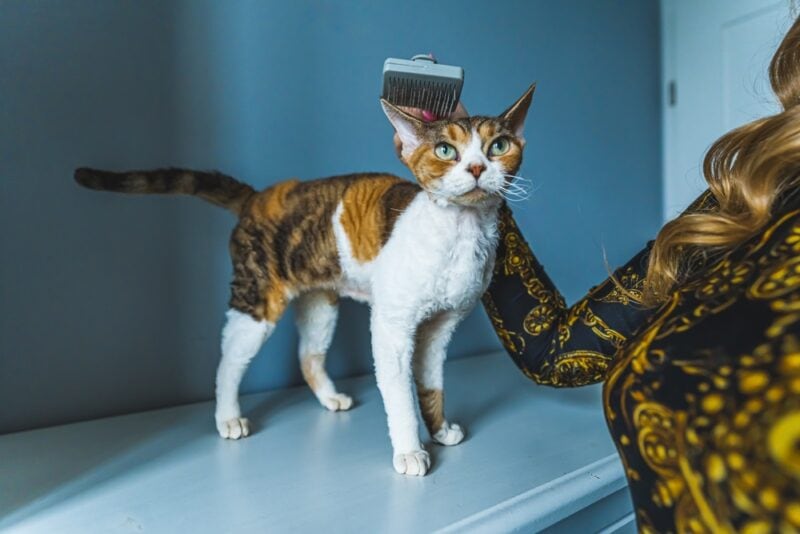
Special Needs
Like the Cornish Rex, the Devon Rex frequently struggles to stay warm and is strictly an indoor cat. They will need a warm area out of direct sunlight to remain comfortable. These active cats also need an outlet for their energy, or they can turn to destructive behavior. Using a laser pen is a great way to help them burn off energy and keep them fit.
Suitable for:
Since the Devon Rex is so full of energy, they make a great family pet, especially for children who want to play with them. They’re also a good choice for self-employed pet owners who are often at home.
Which Breed Is Right for You?
The Cornish Rex and Devon Rex have many of the same heating, grooming, and exercise needs. Both are incredibly active but need to remain indoors, so you will need to set aside a few minutes each day for playtime, making them ideal for large families with children. The Cornish Rex has a longer breeding history, potentially making them healthier, but they are available in fewer colors and patterns. The Devon Rex is available in every color and pattern but requires more attention, or they can become destructive.
Featured Image Credit: (L) CatJelli, Shutterstock | (R) pix-l passion, Shutterstock


